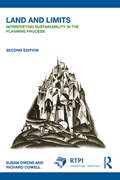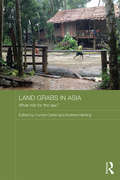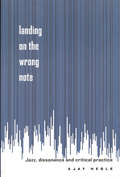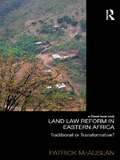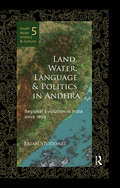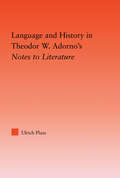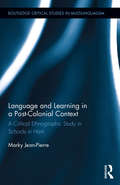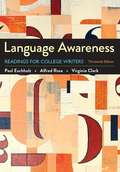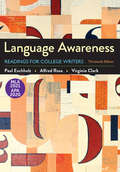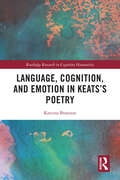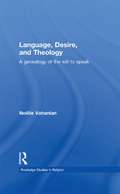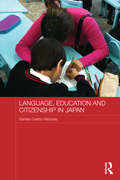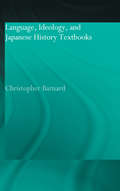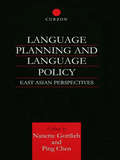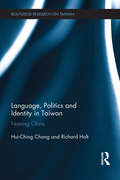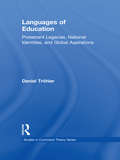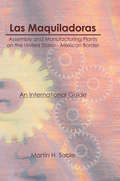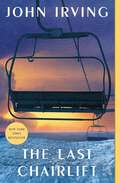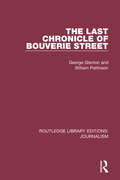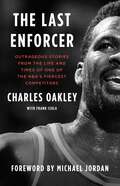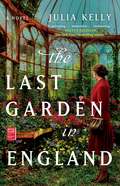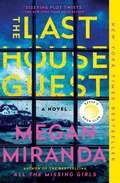Special Collections
Benetech’s Global Certified Accessible Titles
Description: Benetech’s GCA program is the first independent third-party EPUB certification to verify ebook accessibility. By creating content that is born accessible, publishers can meet the needs of all readers. Learn more: https://bornaccessible.benetech.org/
- Table View
- List View
Land and Limits
by Richard Cowell and Susan OwensThe first edition of this seminal book was written at a time of rapidly growing interest in the potential for land use planning to deliver sustainable development, and explored the connections between the two and implications for public policy. In the decade since the book was first conceived, environmental imperatives have risen still further up the policial agenda and land use conflicts have intensified, lending even greater importance to the authors' research. In a rigorous discussion of concepts, policy instruments and contemporary planning dilemmas, the authors challenge prevailing assumptions about planning for sustainability. After charting the remarkable growth in expectations of planning, they show how attempts to interpret sustainability must lead to fundamental moral and political choices.
Land Grabs in Asia
by Connie Carter and Andrew HardingAlthough there is no universally accepted definition of the term "land grabbing", ordinary people whose livelihoods are adversely affected by land grabbing know exactly what it is. It involves the physical capture and control of land and homes, including the usurpation of the power to decide how and when these will be used and for what purposes – with little or no prior consultation or compensation to the displaced communities. This thought-provoking book defines land grabbing, and examines aspects of the land grabs phenomenon in seven Asian countries, researched and written by country-specific legal scholars. The book provides unique perspectives on how and why land grabbing is practised in China, India, Pakistan, Cambodia, Malaysia, Myanmar and Indonesia, and explores the surprising role that law plays in facilitating and legitimizing land grabs in each country. In contrast to most of the literature which law focuses on foreign investors’ rights under international law, here the focus is on domestic laws and legal infrastructures. Finding that Asian States need to move beyond existing regimes that govern land to a regime that encourages more equitable land rights allocation and protection of stakeholders’ rights, the book urges further research in the nexus between the use of law to facilitate development. Land Grabs in Asia is the first book to explore land grabbing in multiple jurisdictions in Asia. As such, it will appeal to students and scholars of law and development, law and society, and international relations, as well as being essential reading for development policy-makers and government ministers.
Landing on the Wrong Note
by Ajay HebleAn imaginative and passionate synthesis of form and function, Landing on the Wrong NOte goes beyond mainstream jazz criticism, outlining a new poetics of jazz that emerges not from the ivory tower but from the clubs, performances, and lives of today's jazz musicians.
Land Law
by Louise TeeThis book brings together a team of leading authorities on land law to analyse the key debates and policy issues in this area of the law, with the main chapters addressing proprietary and non-proprietary rights, registration, easements, leases, co-ownership and trusts, mortgages and land law and human rights. Many of the policies and assumptions which underlie land law have immense significance in economic, social and emotional terms upon individuals lives. This book set out to analyse the current tensions within land law, such as the conflicting needs for certainty and fairness, and the difficult balance which has to be drawn between protecting existing property rights and simplifying conveyancing to ensure the easy transfer of land. Particular attention is paid to the likely impact of the Human Rights Act. Land Law: issues, debates, policy will be essential reading for students, practitioners and others seeking an understanding of the key issues and debates surrounding this area of the law.
Land Law Reform in Eastern Africa
by Patrick McAuslanLand Law Reform in East Africa reviews development and changes in the statutory land laws of 7 countries in Eastern Africa over the period 1961 – 2011. The book is divided into two parts. Part 1 sets up the conceptual framework for consideration of the reforms, and pursues a contrast between transformational and traditional developments; where the former aim at change designed to ensure social justice in land laws, and the latter aim to continue the overall thrust of colonial approaches to land laws and land administration. Part 2 provides an in-depth and critical survey of the land law reforms introduced into each country during the era of land law reform which commenced around 1990. The overall effect of the reforms has, Patrick McAuslan argues, been traditional: it was colonial policy to move towards land markets, individualisation of land tenure and the demise of customary tenure, all of which characterise the post 1990 reforms. The culmination of over 50 years of working in this area, Land Law Reform in East Africa will be invaluable reading for scholars of land law, and of law and development more generally.
Land, Water, Language and Politics in Andhra
by Brian StoddartThis book explains how access to and use of land, water and language helped shape Andhra politics in India from 1850 down to the present day. After independence, the debate over land reform and policies on irrigation has shaped the fortunes of various governments, while the debate over the make-up of the language-based state has stimulated separatist movements like the one in support of Telangana. The book discusses how British innovations in irrigation in coastal Andhra in the mid-nineteenth century transformed the economy there from food crops to cash crops, and created new markets for local entrepreneurs. This stimulated increased education and social reform in the region, which in turn supported new politics in search of constitutional concessions. The drive for a Telugu language-based province then arose in concert, and those political resources were then used to determine local patterns down to independence. The 1930s ruse of the socialists, then the communist organisations, was an extension of land and water tax debates, which impacted the political nature of development — both before and after — independence. This is one of the first books on Andhra that recounts this story and is based on extensive archival research exploring the deep relationships between land, water, language and politics. It would be of primary interest to those studying modern nationalism in India, natural resource management, Indian politics and economic growth.
Language and History in Adorno's Notes to Literature
by Ulrich PlassLanguage and History in Theodor W. Adorno's Notes to Literature explores Adorno’s essays on literature as an independent contribution to his aesthetics with an emphasis on his theory and practice of literary interpretation. Essential to Adorno’s essays is his unorthodox treatment of language and history and his elaboration of the links between the two. One of Adorno’s major but often-neglected claims is that truth is relative to its historical medium, language. Adorno persistently and creatively tries to narrow the gulf between truth and expression, philosophy and rhetoric, and his essays on literature are practical examples of his effort to critically rescue the rhetorical dimension of philosophy. Rather than relying exclusively on aesthetic concepts inherited from his predecessors in the Western tradition (Kant, Hegel, Nietzsche, Kierkegaard), Adorno’s essays seek to transgress and transcend the conceptual limitations of aesthetic discourse by appropriating a non-conceptual, metaphorical vocabulary borrowed from the literary texts he investigates. Thus, Adorno’s interpretations of literature mobilize an alternative subterranean, primarily essayistic and fragmentary discourse on language and history that eludes the categories that tend to predominate his thinking in his major work, Aesthetic Theory. This book puts forth the claim that Adorno’s essays on literature are of central relevance for an understanding of his aesthetics because they challenge the conceptual limitations of philosophical discourse.
Language and Learning in a Post-Colonial Context
by Marky Jean-PierreThis book explores the social, political, and historical forces that mediate language ideology and practices in post-colonial education and how such ideology and practices influence students’ academic achievement. Jean-Pierre provides empirical evidence that a relationship exists between language practices and school underperformance. He takes Haiti as the focus of study, finding that students and teachers experience difficulty constructing knowledge in a setting in which the language they speak at home (Creole) differs from the language of instruction (French). The research is based on ethnographic data collected in classrooms in both private and public school settings in addition to different sectors of the society (e.g. state and private institutions).
Language Awareness
by Paul Eschholz and Alfred RosaLanguage Awareness helps students understand that writing makes things happen in the world. This collection teaches students how language operates and how it evolves over time?and this understanding, in turn, helps students use language more effectively in their own writing. The supportive apparatus includes unique Language in Action activities, which connect the everyday and the academic by examining current language-related debates that deepen students' understanding of each reading.
This beloved reader has stood the test of time and has been revised with feedback from instructors across the country. The new edition features a blend of classic and contemporary readings that examine a wide range of topics through the lens of language. New readings include a range of perspectives around current topics like "fake news," gender-neutral pronouns, and the #MeToo movement.
Language Awareness with 2020 APA and 2021 MLA Updates
by Paul Eschholz and Alfred Rosa and Virginia ClarkThis ebook has been updated to provide you with the latest guidance on documenting sources in MLA style and follows the guidelines set forth in the MLA Handbook, 9th edition (April 2021).Explore the pervasive influence of language on our lives while becoming a better academic writer with Language Awareness.
Language, Cognition, and Emotion in Keats's Poetry
by Katrina BrannonLanguage, Cognition, and Emotion in Keats’s Poetry applies an innovative cognitive linguistic approach to the poetry of John Keats, the first of its kind to employ a cognitive-based framework to explore the expression and articulation of emotion in his work. Brannon adopts an embodied perspective to emotion, rooted in cognitive linguistics, cognitive grammar, and cognitive poetics but also works from figurative language and stylistics, in examining a selection of Keats’s poems. This approach allows for a close interrogation of the texts themselves but also the languages that compose them, comprising lexical and grammatical elements, which, when taken together, bring out the emotional saliency of Keatsian poetry. While revealing fresh insights into the work of John Keats, the book also sheds further light on the importance of cognitive approaches to poetic and grammatical analyses and how both language and the body can serve as forms of communication through which metaphors can be expressed and contextualized. This volume will appeal to students and scholars interested in cognitive linguistics, figurative language, emotion studies, cognitive science, and Anglophone poetry.
Language, Desire and Theology
by Noëlle VahanianThis interesting and provocative work develops a new theological approach to language in the light of contemporary critical theory.
Language, Education and Citizenship in Japan
by Genaro Castro-VázquezBased on extensive original research, this book explores the early educational experiences of foreign children in Japan. It considers foreign children’s experiences of Japanese schools, examines the special tutoring such children often have to improve their language proficiency, and explores the role of mothers in encouraging their children’s education. It contrasts the experiences of foreign children with those of Japanese children and sets out the extensive difficulties foreign children encounter in becoming fully accepted by and integrated into Japanese society. The book concludes by discussing the nature of citizenship in Japan and the importance of education, including early education, in shaping Japanese citizenship.
Language, Ideology and Japanese History Textbooks
by Christopher BarnardThe Japanese history textbook debate is one that keeps making the news, particularly with reference to claims that Japan has never 'apologised properly' for its actions between 1931 and 1945, and that it is one of the few liberal, democratic countries in which textbooks are controlled and authorised by the central government. There are frequent protests, both from within Japan and from overseas, that a biased, nationalistic history is taught in Japanese schools. This is the first time that all the authorised textbooks currently in use have been analysed using a critical discourse that is anchored firmly in the theory of 'language within society', elucidating the meanings and associated ideologies created by the language of the textbooks.
Language Planning and Language Policy
by Nanette Gottlieb and Ping ChenExamines the major issues of language planning and policy in Japan, Mainland China, Hong Kong, Taiwan, Korea and Vietnam, particularly those relating to the selection of official language, script, and written language.
Language, Politics and Identity in Taiwan
by Richard Holt and Hui-Ching ChangFollowing the move by Chiang Kai-shek and the Chinese Nationalist Party Kuomingtang (KMT) to Taiwan after losing the Chinese civil war to the Chinese Communist Party (CCP) in the late 1940s, and Chiang’s subsequent lifelong vow to reclaim the mainland, "China " has occupied—if not monopolized—the gaze of Taiwan, where its projected images are reflected. Whether mirror image, shadow, or ideal contrast, China has been, and will continue to be, a key reference point in Taiwan's convoluted effort to find its identity. Language, Politics and Identity in Taiwan traces the intertwined paths of five sets of names Taiwan has used to name China since the KMT came to Taiwan in 1949: the derogatory "Communist bandits"; the ideologically focused "Chinese Communists"; the seemingly neutral geographical designators "mainland" and "opposite shore/both shores"; and the ethnic and national label "China," with the official designation, "People's Republic of China." In doing so, it explores how Taiwanese identities are constituted and reconstituted in the shifting and switching of names for China; in the application of these names to alternative domains of Taiwanese life; in the waning or waxing of names following tides of history and polity; and in the increasingly contested meaning of names. Through textual analyses of historical archives and other mediated texts and artifacts, the chapters chart Taiwan's identity negotiation over the past half century and critically evaluate key interconnections between language and politics. This unique book will be of great interest to students and scholars of Taiwan studies, Chinese politics, communication studies and linguistics.
Languages of Education
by Daniel TröhlerIn this landmark contribution to the study of the formation of the modern school, Daniel Tröhler applies one of the most recognized methods of historical research to an analysis of the "language" of the academic discipline of education. Arguing the value of looking at languages rather than arguments--langues rather than paroles--this method of historical research is used to examine the background of different philosophies, theories, or arguments of education, specifically republicanism and Protestantism. Tröhler’s argument is that such analysis is essential to tracing back educational arguments to the ideological core of their concerns, and thus to understanding in international perspective the historical development of education systems and organizations and to evaluating their different theoretical and political approaches and claims. Elegantly written, with the historian’s attention to archival material, this book enables the reader to understand the complex and different social, cultural, religious, and political context factors embedded in the "thought" of schooling and its objects of scrutiny--its notions of the child and teacher. Languages of Education is essential reading for scholars and students across the fields of history and philosophy of education, curriculum studies, and comparative education.
La Papauté et les croisades / The Papacy and the Crusades
by Michel BalardThis volume brings together a selection of the papers on the theme of the Papacy and the Crusades, delivered at the 7th Congress of the Society for the Study of the Crusades and the Latin East. After the introduction by Michel Balard, the first papers examine aspects of crusader terminology. The next section deals with events and perceptions in the West, including papers on the crusades against the Albigensians and Frederick II, and on the situation in the Iberian peninsula. There follow studies on relations between crusaders and the local populations in the Byzantine world after 1204 and Frankish Greece, and in Cilician Armenia, while a final pair looks at papal interventions in Poland and Scandinavia.
Las Maquiladoras
by Martin SableHere is a one-stop research resource on the assembly and manufacturing plants on the U.S.-Mexico border, termed Maquiladoras. A combination bibliography and directory, Las Maquiladoras focuses on various aspects of the American-owned companies that are located in Mexico and employ Mexican citizens.While the thrust of the items included in the select bibliography is on the industrial, commercial, and financial aspects of the phenomenon, including the actions of multinational corporations and their investments, there are also entries dealing with the matter of labor, United States and Mexican governmental undertakings, legal and urban problems, regional development and planning, population, technology transfer, sociocultural considerations, and the interdisciplinary field of border studies, which is concerned with a host of topics ranging form health and education to urban geography, economic matters, and the cultural impact on border residents of the establishment of maquiladoras. The impact of economic development, industrialization, and urbanization on border culture is also reflected.In the directory, readers can locate names and addresses of local, state, and federal level government agencies in the U.S. and Mexico; information centers; labor unions; professional associations; and research centers.The bibliography, comprised of books and book chapters, pamphlets, conference papers and proceedings, government publications, scholarly dissertations, videotapes of television programs, and magazine, journal, and newspaper articles, will be an indispensable tool for business people, bankers, journalists, government experts, economists, students, and librarians. The current interest in border studies and in Mexico, in particular, will make this unique book especially useful to scholars of folklore, geography, history, labor, political science, and sociology.Special features in the book include a list of experts in a variety of disciplines and a listing of U.S. and Mexican cities and towns on opposite sides of the border. Because the number of maquiladoras is expected to continue expanding rapidly, this volume should remain a highly valuable resource.
The Last Chairlift
by John IrvingJohn Irving&’s fifteenth novel is &“powerfully cinematic&” (The Washington Post) and &“eminently readable&” (The Boston Globe). The Last Chairlift is part ghost story, part love story, spanning eight decades of sexual politics.In Aspen, Colorado, in 1941, Rachel Brewster is a slalom skier at the National Downhill and Slalom Championships. Little Ray, as she is called, finishes nowhere near the podium, but she manages to get pregnant. Back home, in New England, Little Ray becomes a ski instructor. Her son, Adam, grows up in a family that defies conventions and evades questions concerning the eventful past. Years later, looking for answers, he will go to Aspen. In the Hotel Jerome, where he was conceived, Adam will meet some ghosts; in The Last Chairlift, they aren&’t the first or last ghosts he sees. John Irving has written some of the most acclaimed books of our time—among them, The World According to Garp and The Cider House Rules. A visionary voice on the subject of sexual tolerance, Irving is a bard of alternative families. In the &“generously intertextual&” (The New York Times) The Last Chairlift, readers will once more be in his thrall.
The Last Chronicle of Bouverie Street
by George Glenton and William PattinsonOriginally published in 1963. This book tells the story of the closure of the News Chronicle and its London evening companion The Star as seen by two journalists on the News Chronicle. They describe the Daily News tradition, record some of its finest hours and write about some of the greatest journalists who served their employers loyally. They endeavour to unravel what went on in Bouverie Street immediately before, at the moment of the crash and afterwards. The merger of these two prominent organs of public opinion with the Daily Mail and Evening News made splash headlines and was widely discussed in the press, on television and radio. Faithful readers were dismayed, politicians were alarmed, and the staff of the newspapers were indignant. For 114 years the Daily News and its modern successor the News Chronicle had weathered financial storms and overcome gales of prejudice and political opinion to become one of the most respected morning papers. The Star had, since 1888, fought the cause of the underdog and earned the affection and gratitude of many Londoners. This book highlights the feelings of men and women who were proud to work for their paper but did not know till almost the very last that they were fighting a losing battle, and how and why some of them kept the secret.
The Last Dance of the Debutante
by Julia KellyThe author of the &“sweeping, stirring, and heartrending&” (Kristin Harmel, author of The Room on Rue Amélie) The Light Over London returns with a masterful, glittering novel that whisks you to midcentury Britain as it follows three of the last debutantes to be presented to Queen Elizabeth II.When it&’s announced that 1958 will be the last year debutantes are to be presented at court, thousands of eager mothers and hopeful daughters flood the palace with letters seeking the year&’s most coveted invitation: a chance for their daughters to curtsey to the young Queen Elizabeth and officially come out into society. In an effort to appease her traditional mother, aspiring university student Lily Nichols agrees to become a debutante and do the Season, a glittering and grueling string of countless balls and cocktail parties. In doing so, she befriends two very different women: the cool and aloof Leana Hartford whose apparent perfection hides a darker side and the ambitious Katherine Norman who dreams of a career once she helps her parents find their place among the elite. But the glorious effervescence of the Season evaporates once Lily learns a devastating secret that threatens to destroy her entire family. Faced with a dark past, she&’s forced to ask herself what really matters: her family legacy or her own happiness. With her signature &“intricate, tender, and convincing&” (Publishers Weekly) storytelling, Julia Kelly weaves an unforgettable tale of female friendship amid the twilight days of Britain&’s grand coming out balls.
The Last Enforcer
by Charles OakleyA memoir from Charles Oakley—one of the toughest and most loyal players in NBA history—featuring unfiltered stories about the journey that basketball has taken him on and his relationships with Michael Jordan, LeBron James, Charles Barkley, Patrick Ewing, Phil Jackson, Pat Riley, James Dolan, Donald Trump, George Floyd, and so many others.If you ask a New York Knicks fan about Charles Oakley, you better prepare to hear the love and a favorite story or two. But his individual stats weren&’t remarkable, and while he helped power the Knicks to ten consecutive playoffs, he never won a championship. So why does he hold such a special place in the minds, hearts, and memories of NBA players and fans? Because over the course of nineteen years in the league, Oakley was at the center of more unbelievable encounters than Forrest Gump, and nearly as many fights as Mike Tyson. He was the friend you wish you had, and the enemy you wish you&’d never made. If any opposing player was crazy enough to start a fight with him, or God forbid one of his teammates, Oakley would end it. &“I can&’t remember every rebound I grabbed but I do have a story—the true story—of just about every punch and slap on my resume,&” he says. In The Last Enforcer, Oakley shares one incredible story after the next—all in his signature, unfiltered style—about his life in the paint and beyond, fighting for rebounds and respect. You&’ll look back on the era of the 1990s NBA, when tough guys with rugged attitudes, unflinching loyalty, and hard-nosed work ethics were just as important as three-point sharpshooters. You&’ll feel like you were on the court, in the room, can&’t believe what you just saw, and need to tell everyone you know about it.
The Last Garden in England
by Julia KellyFrom the author of the international bestsellers The Light Over London and The Whispers of War comes &“a compelling read, filled with lovable characters and an alluring twist of fates&” (Ellen Keith, author of The Dutch Wife) about five women living across three different times whose lives are all connected by one very special garden.Present day: Emma Lovett, who has dedicated her career to breathing new life into long-neglected gardens, has just been given the opportunity of a lifetime: to restore the gardens of the famed Highbury House estate, designed in 1907 by her hero Venetia Smith. But as Emma dives deeper into the gardens&’ past, she begins to uncover secrets that have long lain hidden. 1907: A talented artist with a growing reputation for her work, Venetia Smith has carved out a niche for herself as a garden designer to industrialists, solicitors, and bankers looking to show off their wealth with sumptuous country houses. When she is hired to design the gardens of Highbury House, she is determined to make them a triumph, but the gardens—and the people she meets—promise to change her life forever. 1944: When land girl Beth Pedley arrives at a farm on the outskirts of the village of Highbury, all she wants is to find a place she can call home. Cook Stella Adderton, on the other hand, is desperate to leave Highbury House to pursue her own dreams. And widow Diana Symonds, the mistress of the grand house, is anxiously trying to cling to her pre-war life now that her home has been requisitioned and transformed into a convalescent hospital for wounded soldiers. But when war threatens Highbury House&’s treasured gardens, these three very different women are drawn together by a secret that will last for decades. &“Gorgeously written and rooted in meticulous period detail, this novel is vibrant as it is stirring. Fans of historical fiction will fall in love with The Last Garden in England&” (Roxanne Veletzos, author of The Girl They Left Behind).
The Last House Guest
by Megan Miranda**A Reese Witherspoon x Hello Sunshine Book Club Pick and New York Times bestseller** A year after a summer guest dies under suspicious circumstances, her best friend lives under a cloud of grief and suspicion in this &“fast-paced and gripping&” (People) thriller filled with &“dizzying plot twists and multiple surprise endings&” (The New York Times Book Review).Littleport, Maine, has always felt like two separate towns: an ideal vacation enclave for the wealthy, whose summer homes line the coastline; and a simple harbor community for the year-round residents whose livelihoods rely on service to the visitors. Typically, fierce friendships never develop between a local and a summer girl—but that&’s just what happens with visitor Sadie Loman and Littleport resident Avery Greer. Each summer for almost a decade, the girls are inseparable—until Sadie is found dead. While the police rule the death a suicide, Avery can&’t help but feel there are those in the community, including a local detective and Sadie&’s brother, Parker, who blame her. Someone knows more than they&’re saying, and Avery is intent on clearing her name, before the facts get twisted against her. &“A riveting read…from master of suspense, Megan Miranda,&” (Mary Kubica, New York Times bestselling author of The Good Girl) The Last House Guest is a clever, twisty mystery that brilliantly explores the elusive nature of memory and the complexities of female friendships.
